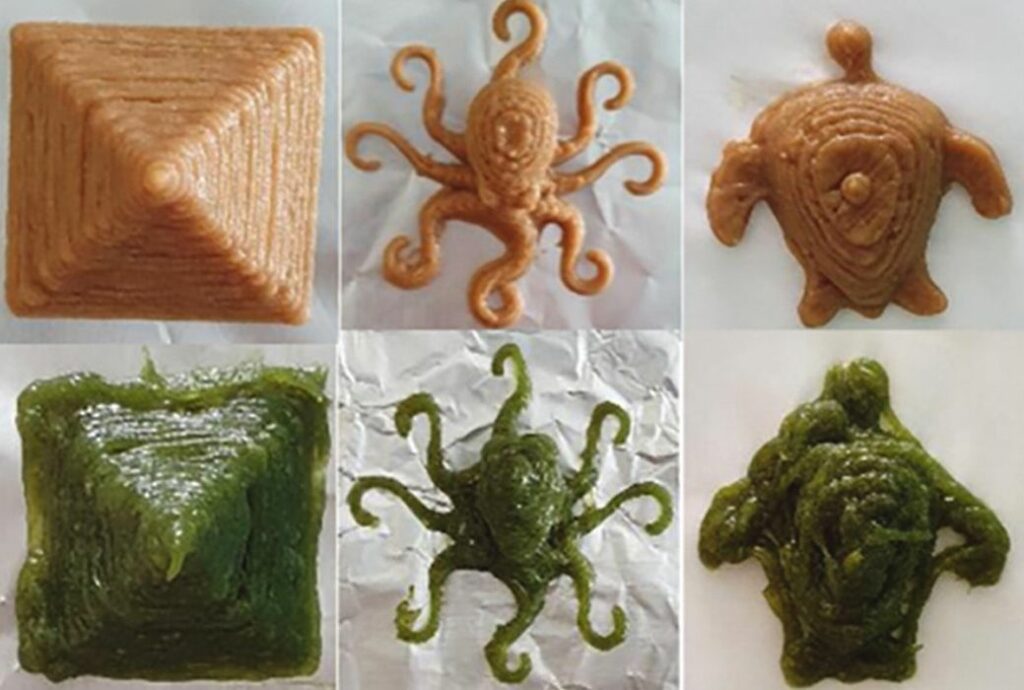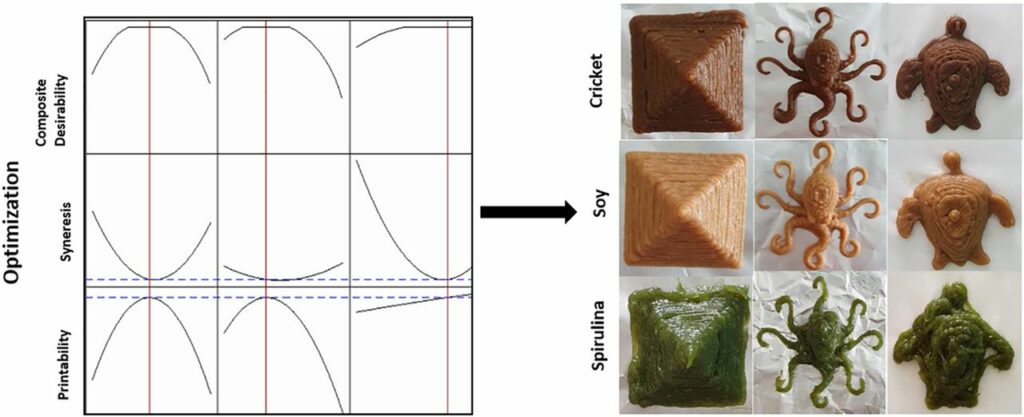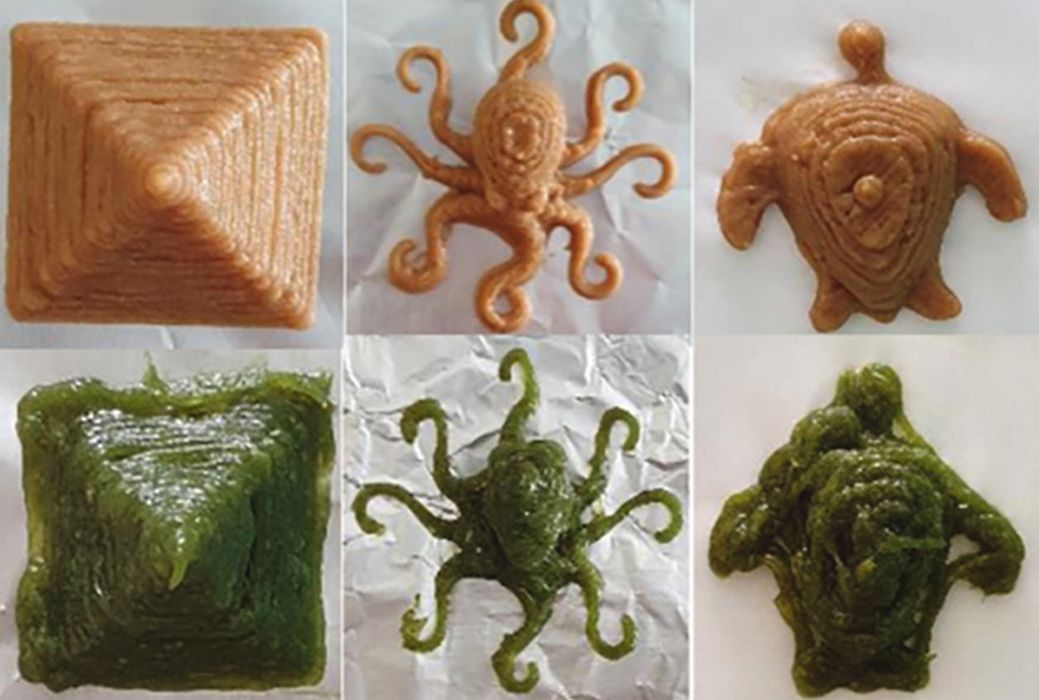
New research could show a way to increase 3D printed food adoption and at the same increase protein intake.
3D printed food has a spotty history. Ten years ago there was much fanfare about the possibility of 3D printing dinner, but experiments showed it really wasn’t a practical thing.
There were multiple problems, but the two most important were time and materials. The prints took far too long to produce — you might literally starve while waiting for your meal. Also, the materials used in food 3D printing were extremely limited, and no one really wants to eat a singular material. Efforts at making multi-material food 3D printers seem to have evaporated.
One approach that might have worked was to circumvent the print delay problem by 3D printing food items in advance. This has been relatively successful in 3D printing, for example, chocolate items, or other non-perishable food items. But the technology is still a niche.
The new research proposes a new use for 3D printing of food: hiding proteins.
As the world’s population continues to grow, there is increasing interest in sources of protein. Much of the world’s protein today comes from meat, which turns out to be rather terrible for the environment: the amount of energy, water and land area required to produce a unit of traditional meat is likely too much for our future to accommodate.
There are other sources of protein available, but they are not currently leveraged nearly enough. Why? The answer is simple: most people don’t want to eat insects or algae!
The research team’s proposition is that by 3D printing food items fortified with alternative proteins, they may be more acceptable to eaters.
They explain:
“Three-dimensional food printing (3DFP) of multicomponent inks fortified with alternative proteins can help drive consumers towards easier and greater acceptance of alternative proteins by familiar nature of the final printed products with respects to taste, texture and appearance. Protein fortification is a well-established way of improving the nutritional and functional properties of foods and helping prevent malnutrition.”
For their research, they fortified carrot powder with proteins from three insects, algae and a traditional meat protein. The objects 3D printed with these “inks” were simple 3D structures that didn’t have anything to do with the nature of the proteins hidden within them.
This is a very intriguing proposal, and it could just work — if such materials could actually be 3D printed.

That’s the nature of the work undertaken in their paper, “Systematic Engineering approach for optimization of multi-component alternative protein-fortified 3D printing food Ink”. They tested the printability of these food concoctions and rated their performance.
The research seems to show that this approach is feasible, and they predict that multi-component food material reinforcement could be “widely adopted in 3D food printing.”
I think so too.
Via Science Direct

